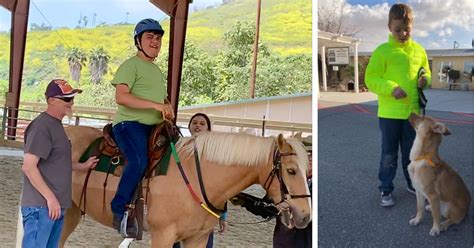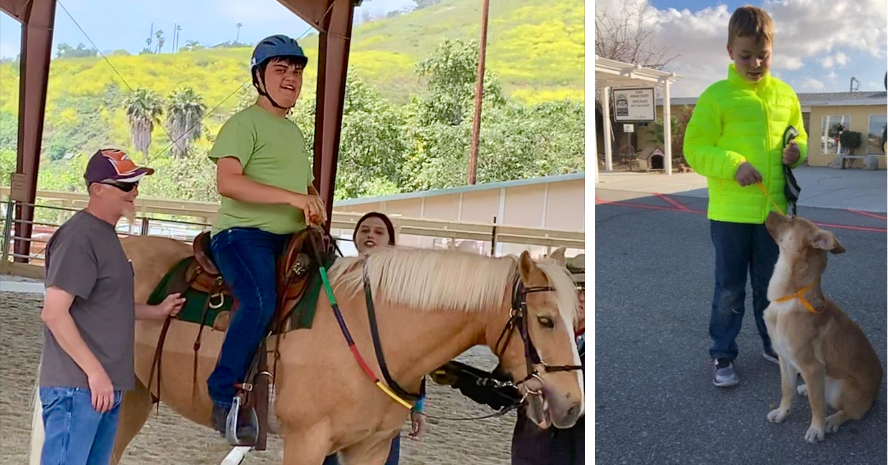Animal-Assisted Therapy (AAT) is an emerging field that harnesses the bond between humans and animals to promote emotional and mental well-being. From therapy dogs to companion cats, animals have been shown to offer significant therapeutic benefits, providing comfort, reducing stress, and enhancing overall emotional health. This article explores the science behind AAT, the types of animals commonly used in therapy, and the emotional benefits they bring. By examining case studies, understanding the importance of proper training and certification, and looking ahead to future trends, we delve into how Animal-Assisted Therapy is making a profound impact on mental health and em
Explore this topic with zopmj.com in great detail.
1. Introduction to Animal-Assisted Therapy (AAT)
Animal-Assisted Therapy (AAT) is a therapeutic approach that uses animals to improve a person’s overall well-being. This method capitalizes on the special bond between humans and animals, recognizing the comfort, companionship, and joy that animals can offer. Unlike traditional therapy, AAT brings specially trained animals into treatment settings to help individuals manage various mental health issues, such as anxiety, depression, PTSD, and others.
The origins of Animal-Assisted Therapy (AAT) can be found in the distant past, when animals were commonly used for emotional support. However, AAT has since developed into a structured and established therapeutic approach. Today, a diverse array of animals, encompassing dogs, cats, horses, and even birds, are employed in therapy sessions to enhance individuals’ emotional well-being. These animals facilitate the healing process by cultivating trust, mitigating stress, and offering unconditional support, making AAT an essential component of contemporary healthcare.

2. The Science Behind Animal-Assisted Therapy
The science behind Animal-Assisted Therapy (AAT) is grounded in the positive physiological and psychological effects that interactions with animals can have on humans. Research has shown that spending time with animals can trigger the release of oxytocin, a hormone associated with bonding and emotional regulation. This interaction reduces levels of cortisol, the body’s primary stress hormone, leading to a decrease in anxiety and stress.
Additionally, animals in therapy can help lower blood pressure, improve cardiovascular health, and enhance overall mood. These benefits are not merely anecdotal but are supported by numerous studies demonstrating the therapeutic value of animal interactions.
On a psychological level, animals provide non-judgmental companionship, which can be particularly beneficial for individuals struggling with social anxiety, depression, or trauma. The presence of a therapy animal can create a safe and calming environment, encouraging individuals to open up and engage more fully in their therapeutic process. As research continues to grow, the scientific community increasingly recognizes AAT as a powerful tool in promoting mental an

3. Types of Companion Animals Used in Therapy
Animal-Assisted Therapy (AAT) utilizes a diverse range of companion animals, each chosen for their unique abilities to connect with and comfort individuals in therapeutic settings. The most commonly used animals are dogs, known for their loyalty, intelligence, and ability to form deep bonds with humans. Therapy dogs are trained to be calm, gentle, and responsive, making them ideal companions for those dealing with anxiety, depression, or trauma.
Cats are also frequently used in AAT, particularly for individuals who may feel overwhelmed by the energy of a dog. Cats offer a soothing presence with their quiet demeanor and can help reduce feelings of loneliness and stress. Their ability to purr is even believed to have a calming effect on the nervous system.
Horses play a significant role in a specialized form of AAT known as Equine-Assisted Therapy. These large, empathetic animals are particularly effective in helping individuals develop trust, confidence, and emotional awareness. Interacting with horses can be transformative for those dealing with trauma, addiction, or behavioral issues.
Other animals, such as rabbits, birds, and even dolphins, are also used in specific therapeutic contexts. Each species brings its own set of benefits, allowing therapists to tailor the therapy to meet the specific needs of

4. Emotional Benefits of Animal-Assisted Therapy
Animal-Assisted Therapy (AAT) provides substantial emotional benefits, greatly enhancing the mental health of individuals of all ages and with diverse conditions. The presence of a therapy animal can immediately create a soothing environment, which is particularly valuable for those struggling with elevated levels of stress, anxiety, or depression. The straightforward act of petting or engaging with an animal can stimulate the release of endorphins, the body’s natural mood-boosting chemicals, fostering feelings of contentment and tranquility.
For individuals experiencing isolation or loneliness, the unconditional love and companionship offered by animals can be deeply comforting. This bond helps build trust and fosters a sense of security, creating a more open and receptive environment for individuals to express their emotions in therapy sessions.
Furthermore, therapy animals provide a non-judgmental support system, easing the anxieties of those battling low self-esteem or social phobia. Their unwavering acceptance fosters increased empathy, patience, and emotional strength. For individuals coping with trauma or grief, the companionship of an animal offers a special kind of emotional solace.
5. Animal-Assisted Therapy for Mental Health Disorders
Animal-Assisted Therapy (AAT) has proven to be a valuable adjunct in the treatment of various mental health disorders. For individuals with anxiety, the calming presence of a therapy animal can significantly reduce stress and promote relaxation. The act of interacting with an animal helps lower cortisol levels and boost mood-enhancing hormones, which can alleviate symptoms of anxiety.
In cases of depression, therapy animals offer companionship and emotional support that can combat feelings of isolation and hopelessness. Their non-judgmental nature encourages individuals to engage more actively in therapy and fosters a sense of purpose.
AAT is also beneficial for those with PTSD, providing a safe and comforting presence that helps individuals manage their symptoms and regain a sense of control. The routine and structure involved in caring for and interacting with a therapy animal can aid in developing coping strategies and improving overall emotional resilience.
Overall, AAT complements traditional therapeutic approaches by enhancing emotional support and providing a unique, empathe
6. Case Studies and Success Stories
Numerous case studies and success stories highlight the transformative impact of Animal-Assisted Therapy (AAT) on individuals with various mental health challenges. One notable example is the story of Emily, a young woman with severe anxiety and depression. After beginning AAT with a therapy dog named Max, Emily reported significant improvements in her mood and social interactions. Max’s presence provided her with a sense of calm and emotional support, allowing her to participate more actively in therapy and regain confidence in social situations.
Another success story involves veterans with post-traumatic stress disorder (PTSD). In a program pairing veterans with therapy horses, participants experienced marked reductions in PTSD symptoms. The veterans found the horses’ non-judgmental nature and the structured interactions to be deeply therapeutic, helping them manage their trauma and develop better coping strategies.
Additionally, a case involving children with autism spectrum disorder (ASD) demonstrated how AAT can enhance social skills and emotional regulation. A therapy cat named Bella helped a young boy with ASD improve his communication skills and reduce anxiety, as the cat’s gentle presence created a safe space for the child to express himself.
These case studies illustrate the diverse applications of AAT and its ability to make a meaningful difference in individuals’ lives by offering comfort, support, and emotional healing.
7. Training and Certification for Therapy Animals
Therapy animals play a vital role in therapeutic settings, and their effectiveness hinges on rigorous training and certification. Specialized training is essential for these animals to develop the skills needed for safe and compassionate interactions with individuals. This training typically encompasses socialization, obedience, and desensitization to a wide range of environments and stimuli. This ensures that the animal remains calm and responsive even in diverse and potentially challenging situations.
Certification programs, offered by organizations like the International Association of Animal Therapy (IAAT) and Therapy Dogs International (TDI), evaluate both the animal’s behavior and the handler’s skills in managing therapy sessions. The certification process includes assessing the animal’s temperament, responsiveness, and ability to cope with stress. It also evaluates the handler’s understanding of proper handling techniques and ethical guidelines.
Certified therapy animals undergo regular assessments and must maintain a high standard of behavior. This ongoing evaluation ensures they continue to meet the stringent requirements for effective therapy work.
8. How to Find a Reputable Animal-Assisted Therapy Program
To find a reputable Animal-Assisted Therapy (AAT) program, thorough research and careful consideration are essential. Begin by seeking programs accredited by established organizations such as the International Association of Animal Therapy (IAAT) or Therapy Dogs International (TDI). These organizations guarantee that programs adhere to strict standards of training and ethical practices.
To evaluate a therapy animal program’s efficacy and quality, seek out reviews and testimonials from past participants and healthcare professionals. Ensure the program clearly outlines its training procedures, certification requirements for therapy animals, and the qualifications of its therapists.
It’s also important to visit the program in person, if possible, to observe the environment and interactions between therapy animals and clients. Ensure that the program emphasizes the well-being and proper treatment of animals, as well as maintaining a supportive and professional therapeutic setting. By conducting thorough research and selecting a well-established program, you can ensure a positive and
9. Future Trends and Research in Animal-Assisted Therapy
The future of Animal-Assisted Therapy (AAT) is promising, with ongoing research and emerging trends shaping its evolution. One significant trend is the integration of technology into AAT. Innovations such as virtual reality and telehealth platforms are being explored to enhance and complement traditional therapy methods. These technologies offer new ways to include therapy animals in virtual settings, potentially expanding access to AAT for individuals who may not be able to participate in person.
Research is also focusing on the specific mechanisms by which animals affect mental health. Studies are examining the physiological and psychological processes involved in human-animal interactions to better understand how therapy animals contribute to emotional well-being. This research aims to refine therapy techniques and improve outcomes for individuals with various mental health conditions.
Another emerging trend is the increased emphasis on personalized therapy. Tailoring AAT to the unique needs of individuals, including selecting specific types of animals and customizing interactions, is becoming more common. This approach aims to maximize the therapeutic benefits by addressing individual preferences and needs.
As AAT continues to gain recognition, it is expected that new training protocols, certification stand
Animal-Assisted Therapy (AAT) offers a unique and powerful approach to enhancing emotional well-being, providing significant benefits for individuals facing various mental health challenges. By understanding the science behind AAT, exploring the diverse types of therapy animals, and examining real-world success stories, it becomes clear that these compassionate interactions can play a vital role in therapy. As research and technology continue to advance, AAT will likely evolve, offering even greater suppo
zopmj.com

